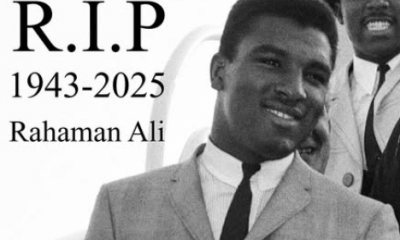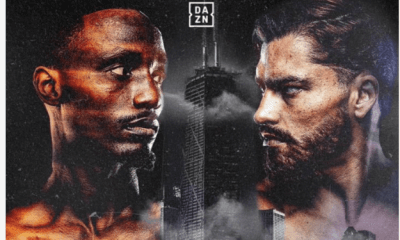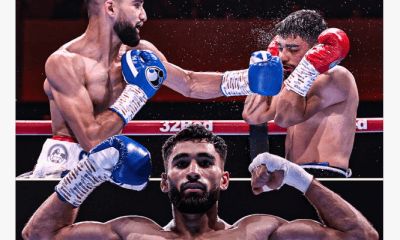Featured Articles
Did Jackie Tonawanda Posthumously Bamboozle the Boxing Hall of Fame?
PART ONE OF A TWO-PART STORY — On June 12, the late Jackie Tonawanda will be formally inducted into the International Boxing Hall of Fame in Canastota, New York. She will be enshrined alongside such notables as Bernard Hopkins, Floyd Mayweather Jr, Wladimir Klitschko and Andre Ward.
Here are seven true facts about Tonawanda:
*Tonawanda was the first woman to apply for a professional boxing license in New York. The New York State Athletic Commission acted on her petition on Oct. 8, 1974 and turned her down.
*Tonawanda filed a complaint with the New York State Human Rights Commission charging the NYSAC with sex discrimination that violated her constitutional rights and took it a step further, hiring attorney Stanley N. Soloman to argue her case before the New York State Supreme Court.
*The NYSAC sought to have her suit dismissed but was shot down by Justice Harry B. Frank who ruled in a decision rendered on June 17, 1975 that her case could go forward.
*Nine days before Judge Frank’s ruling, Tonawanda appeared on a show at Madison Square Garden called “Oriental World of Self Defense” which showcased several different styles of martial arts. Tonawanda was matched against a man, identified as Larry Rodiana, in a 5-round kickboxing contest. No major paper covered the event, but it would be widely reported that she knocked out Rodiana in the second round.
*On Sept. 19, 1978, Jackie Tonawanda and two of her colleagues, Marian Trimiar and Cathy “Cat” Davis, became the first licensed female boxers in New York.
*On Feb. 16, 1979, Tonawanda appeared on a boxing card in Louisville where she lost a 6-round split decision to Diane Clark.
*Tonawanda passed away on June 9, 2009 at a hospital in Harlem. Her death at age 75 or thereabouts was attributed to colon cancer.
—
Sportswriters are inherently drawn to athletes who are different. Over the years, Tonawanda, who called herself “Lady Tyger” and billed herself as the “Female Ali,” was the subject of many newspaper stories. On Oct. 6, 1974, she was profiled in a story in the New York Daily News. The most recent story about her in a traditional newspaper was authored by Herb Boyd and ran in the Amsterdam (NY) News on May 7, 2020.
Reading these newspaper stories, one is struck by the discrepancies.
The inconsistencies would not have surprised Randy Gordon. The one-time editor of The Ring magazine who chaired the New York State Athletic Commission from 1979 to 1985, Gordon was flabbergasted to learn that Tonawanda, elected to the IBHOF in the Female Trailblazer category, was headed to Canastota. “{Her} entire story is clouded in secrecy, mystery, distortion, deceptions, lies, falsehoods,” he wrote in a story that was published on Feb. 15 of this month at “NY Fights.” For good measure, Gordon called Tonawanda the greatest scam artist in the history of boxing (italics mine).
The 1974 story in the New York Daily News was written by Bill Verigan. Tonawanda told Verigan that she got into boxing because of a boyfriend who was killed in the Vietnam War: “He was a boxer and when he’d go to the gym, I’d go too.”
“Over the years,” wrote Verigan, “she has gotten to know many fighters. The likes of Joe Louis and Rocky Marciano have showed her their tricks and tutored her.”
Two years later, on Oct. 22, 1976, a more elaborate story about Tonawanda appeared in the Miami News under the byline of Mary Jane Fine. Tonawanda was then in Miami keeping fit by working out at Chris Dundee’s 5th Street Gym in Miami Beach.
As a child growing up in Long Island, wrote Fine, Jackie Tonawanda considered becoming a psychiatrist and her hobbies included listening to classical music. Tonawanda told her that she had a fight scheduled in January with light heavyweight contender Mike Quarry (brother of Jerry) at the Houston Astrodome with a $4 million purse riding on the outcome and Ms. Fine dutifully relayed this information to her readers.
About that 1979 fight in Louisville between Tonawanda and Diane Clark:
The card’s headliner was Greg Page. A local fighter who would go on to win a share of the world heavyweight title, Page was making his pro debut after a decorated amateur career. Clark was subbing for the mysterious Lillian “Wonder Woman” Wells who pulled out for unexplained reasons. A United Press pre-fight story declared that Tonawanda was making the thirteenth defense of the World Female Light Heavyweight Title that she had won in 1971. Clark was dressed with an 11-4 record.
Jackie Tonawanda would come to assert that she was ill when she entered the ring against Clark, telling one reporter she had pneumonia. As for Diane Clark, in 2013, Washington Post reporter DeNeen L. Brown discovered her living in a homeless shelter in Prince George County, Maryland. Clark told Brown that her memory of the night in Louisville when she won a split decision over Jackie Tonawanda was bittersweet. As a little girl, she said, she had dreams of owning a world title belt and was crushed when there was no belt to be had.
(Brown’s story had a heartwarming postscript. Her story about Clark was brought to the attention of Matt Farrago, founder of Ring 10, a charity established for the purpose of taking care of ex-boxers in need. In a follow-up story, Brown was able to tell her readers that thanks to the largesse of Ring 10, Diane Clark now had her own apartment.)
One thing to keep in mind as we press forward is that Jackie Tonawanda isn’t going into the International Boxing Hall of Fame because of her boxing prowess; she is going in as a trailblazer, as a woman who played an instrumental role in pushing back the barriers that kept women from competing with other women in the sport of boxing.
Tonawanda fought the establishment. Here’s what NYSAC chairman Jim Dooley wrote in hopes of getting the New York State Supreme Court to dismiss her lawsuit: “Licensing of women as professional boxers will at once destroy the image that attracts serious boxing fans and bring professional boxing into disrepute among them to the financial detriment of those whose livelihoods depend on the activity.” Dooley had a firm ally in New York Daily News pooh-bah Dick Young, New York’s most-widely-read sports columnist. “Let Miss Tonawanda apply for a marriage license,” he quipped. “That could supply her with all the fighting she craves.”
But here too, viewed strictly as a trailblazer, one could argue that the mercurial Jackie Tonawanda doesn’t measure up. Check back soon as we continue to peek behind the curtain with an eye toward separating fact from fiction.
To read PART TWO of this story CLICK HERE
To comment on this story in the Fight Forum CLICK HERE
-

 Featured Articles3 weeks ago
Featured Articles3 weeks agoResults and Recaps from New York Where Taylor Edged Serrano Once Again
-

 Featured Articles1 week ago
Featured Articles1 week agoThe Hauser Report: Zayas-Garcia, Pacquiao, Usyk, and the NYSAC
-
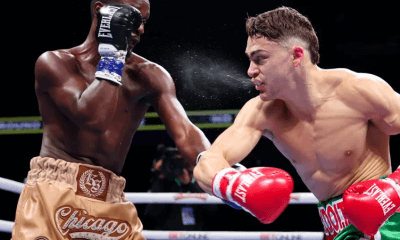
 Featured Articles2 days ago
Featured Articles2 days agoOscar Duarte and Regis Prograis Prevail on an Action-Packed Fight Card in Chicago
-

 Featured Articles3 weeks ago
Featured Articles3 weeks agoResults and Recaps from NYC where Hamzah Sheeraz was Spectacular
-

 Featured Articles4 weeks ago
Featured Articles4 weeks agoFrom a Sympathetic Figure to a Pariah: The Travails of Julio Cesar Chavez Jr
-
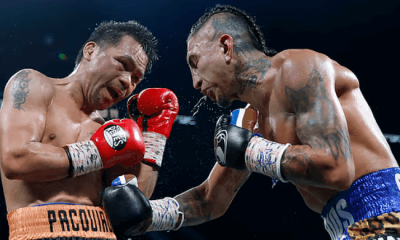
 Featured Articles2 weeks ago
Featured Articles2 weeks agoManny Pacquiao and Mario Barrios Fight to a Draw; Fundora stops Tim Tszyu
-

 Featured Articles4 weeks ago
Featured Articles4 weeks agoPhiladelphia Welterweight Gil Turner, a Phenom, Now Rests in an Unmarked Grave
-
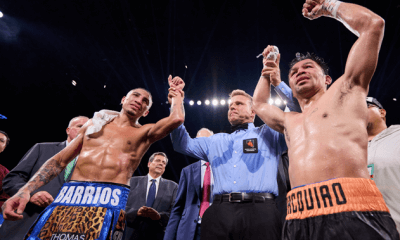
 Featured Articles2 weeks ago
Featured Articles2 weeks agoArne’s Almanac: Pacquiao-Barrios Redux


